Locations of care use provider credentialing to ensure all staff, applicants, and affiliated providers have the credentials necessary to perform their duties responsibly. Credentialing is how trust is cultivated within the healthcare industry, but the manual, paper-based process that is so prevalent can take far too long while also being prone to errors and high costs. As a result, the lack of consistency can lead to an erosion of that trust over time. By utilizing technology to optimize these credentialing processes, that trust can be solidified within locations, from top to bottom.
The process of credentialing providers is vital for patient health and safety because it is the foundation for building trust amongst the key stakeholders in the healthcare industry. In this post, we will take a look at what exactly provider credentialing is, the information needed to credential a healthcare provider, and why using trust as a technology can be so helpful in maximizing efficiency.
What is Provider Credentialing?
Provider credentialing is a vetting process used by locations of care and health insurance companies to verify a provider’s background information, skills, and competency levels. All providers seeking clinical privileges must pass the credentialing process before being allowed to practice onsite. The process is also known as medical credentialing.
Traditionally, provider credentialing is a time-intensive, paper-based process that can take over three months to complete, a time delay that significantly impacts access to clinical privileges.
Exploring the Critical Steps of Credentialing a Provider
Provider credentialing may be completed by an internal or external credentialing department. In either case, the process follows the same three-step process:
Gathering data and documents for potential providers
During the information-gathering phase, the credentialing department gathers data and documents pertaining to the provider from multiple sources. Required information includes details on the provider’s education, license, work history, National Provider Identification number, fellowships, liability coverage, eligibility for state regulatory requirements, and board certifications.
Verifying provider information
Verifying provider information is usually the most time-consuming aspect of provider credentialing. Primary source verification of all documents is required, as secondary sources may be inaccurate, biased, or in uncommon cases, falsified. This process often requires some back-and-forth between the credentialing body, the provider, and primary information sources.
Once verified, provider information is then assessed. If areas of concern or gaps in the documentation are detected, the provider may need to submit additional information to resolve the issue.
Credentialing the provider
After all the information is verified, a final decision is made by the location of care. If successful, the provider is granted clinical privileges. Then, and only then, can the provider practice onsite.
Easing the Strain of Credentialing for Providers and Locations of Care
Paper-based provider credentialing is a logistical headache for providers and locations of care alike. From provider application to credentialing, the process typically takes up to 120 days, slowing a location of care’s ability to provide timely care to patients. This manual process invites a plethora of variables that can be cut out by digitizing the process as a whole. Additionally, the cost of credentialing is high for both providers and locations of care.
Migrating to digital provider credentialing from paper-based systems eases the strain of credentialing for all parties and makes trust easy to develop and grow amongst key stakeholders.
IntelliCentrics’ SEC³URE Ethos platform is a case in point. Providers who submit their credentials to SEC³URE Ethos reduce their credential expenses by up to 90 percent, and see the 120-day credentialing process significantly reduced - often in as quick as 30 days or less.
Providers each receive a SEC³URE Passport to store their digital credentials when they register with the SEC³URE Ethos. SEC³URE Passport is accepted by all SEC³URE facilities (i.e. locations of care using the platform), condensing the process of submitting to national and international locations of care down to a few simple clicks.
For locations of care, the SEC³URE Ethos platform provides access to an extensive network of providers whose qualifications are pre-verified. By reducing the time it takes to onboard physicians, the time to revenue is also expedited, in some cases turning the wait from months to days. All data is securely stored, and providers can add new qualifications and documentation at any time. The result? A faster, more efficient means of credentialing providers that ensures high-quality patient care when and where it’s needed.




